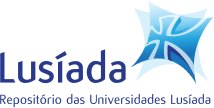Please use this identifier to cite or link to this item:
http://hdl.handle.net/11067/7377Full metadata record
| DC Field | Value | Language |
|---|---|---|
| dc.contributor.author | Costa, José | - |
| dc.contributor.author | Ferreira, João | - |
| dc.contributor.author | Gomes, Pedro Miguel Pinto Reis | - |
| dc.contributor.author | Pereira, Vitor Emanuel de Matos Loureiro da Silva | - |
| dc.date.accessioned | 2024-03-20T10:50:57Z | - |
| dc.date.available | 2024-03-20T10:50:57Z | - |
| dc.date.issued | 2023 | - |
| dc.identifier.citation | Costa, José, e outros (2023) -Data acquisition system for soil and air data monitoring using LoRA technology. In Ferreira, Ana Cristina, e outros, coord. - International conference on technology management and operations. Lisboa : Universidade Lusíada Editora. - ISBN 978-898-640-273-0. - P. 172-183 | pt_PT |
| dc.identifier.uri | http://hdl.handle.net/11067/7377 | - |
| dc.identifier.uri | https://doi.org/10.34628/HQ3S-1846 | - |
| dc.description | Ferreira, Ana Cristina, e outros (2023) - International conference on technology management and operations. - Lisboa : Universidade Lusíada Editora. - ISBN 978-898-640-273-0. | pt_PT |
| dc.description.abstract | This work explores the application of LoRA (Long Range) technology, which allows for the development of low-cost IoT systems. It consists of developing an IoT system for acquiring information about weather conditions (peripheral towers for monitoring both air and soil quality). The various sensor elements send information through LoRA technology to a gateway located at a central point (main tower) in relation to the monitoring area. This information is sent to a database where it is stored and processed for presentation in an application developed for this purpose. The study focuses on identifying suitable solutions in relation to the autonomy of the power system (batteries) and regarding the optimized frequency for sending data from sensors using LoRA technology. For this purpose, a triangulation system was designed consisting of two peripheral towers and a main tower. Two peripheral towers were deployed to transmit data using LoRa to a single main tower, at intervals of 15 seconds, transmitting data about soil temperature and humidity for 58 hours. Regarding the choice of batteries, it was found that the best results for a sending frequency of six sets of data per hour were achieved with LiPo 3.7 V 1350 mA batteries. Data from the two peripheral towers were sent to the main tower at the frequency of 868 MHz, respecting the maximum transmission power. A Web App, using technologies such as JavaScript, HTML, and CSS, was developed. It allows the visualisation of real-time variations in soil humidity using a line graph. It is also possible to observe the current value using a gauge chart with relevant colours, in addition to making it possible to use a time scale to be adjusted, enabling the visualization of a specific time interval. To overcome data loss issues, synchronization between the peripheral towers and the main tower was achieved using an acknowledgment frame (ACK Frame) protocol: the main tower sends an ACK frame only when reception of the data is successful. The success rate of the data transmitted was100%. Although between 6% and 7.4% of the transmitted frames needed to be resent by the peripheral towers, this solution for overcoming data loss improves the potential successful application of LoRa technology in soil and air monitoring systems. | en_EN |
| dc.language.iso | eng | pt_PT |
| dc.publisher | Universidade Lusíada Editora | pt_PT |
| dc.rights | openAccess | pt_PT |
| dc.rights.uri | http://creativecommons.org/licenses/by/4.0/ | pt_PT |
| dc.subject | Agricultura - Inovações tecnológicas | pt_PT |
| dc.title | Data acquisition system for soil and air data monitoring using LoRA technology | pt_PT |
| dc.type | bookPart | pt_PT |
| Appears in Collections: | [ILID-COMEGI] Contribuições em livros | |
Files in This Item:
| File | Description | Size | Format | |
|---|---|---|---|---|
| ICOTEM_2023-172-183.pdf | Texto integral | 1,25 MB | Adobe PDF |  View/Open |
This item is licensed under a Creative Commons License













